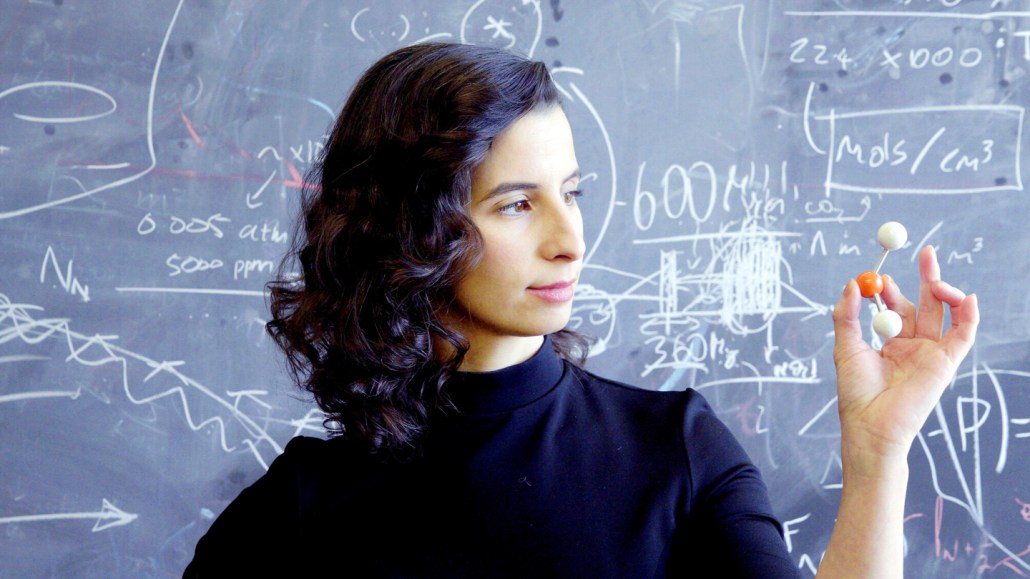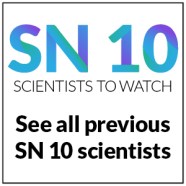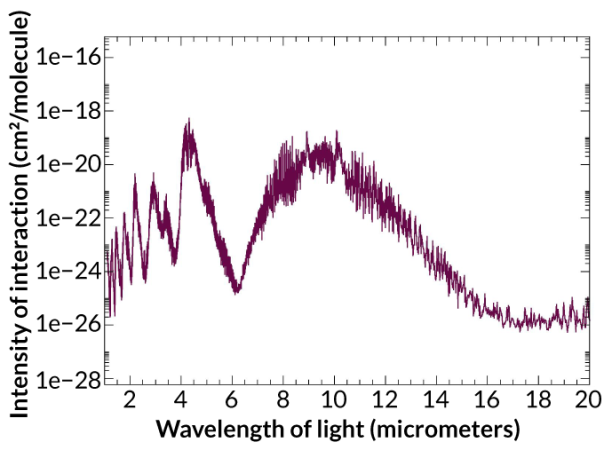
Quantum astrochemist Clara Sousa-Silva puzzles out how molecules interact with light. These interactions leave traces in light that can tell astronomers about the chemical compositions of faraway objects.
Melanie Gonick
Ask Clara Sousa-Silva about her research and she’ll be absolutely clear: Yes, she is looking for aliens. But she is not hunting them.
“The idea that I’m hunting anything, I find very distasteful,” she says. “I have spent my life … trying to let go of the notion that I have to go somewhere to know it, that I have to touch it to know it’s real.”

Sousa-Silva is a quantum astrochemist at Bard College in Annandale-on-Hudson, N.Y., and an expert in knowing things from afar. Her research team studies how molecules in space interact with light, essential groundwork for scientists figuring out what the astronomical objects glimpsed through telescopes are made of. One day, she hopes her work will help identify traces of life in the atmospheres of worlds beyond Earth, including exoplanets — faraway worlds that humankind will almost certainly never visit.
“Molecules behave on a quantum level, and they interact with light on a quantum level,” Sousa-Silva says. “I’m using quantum behavior of molecules — so, chemistry — to study space.”
Though these quantum interactions play out on tiny scales, they leave traces in starlight’s spectrum — a chart of intensity at different wavelengths. Scientists can read spectra like a chemical bar code to identify the molecules the light encountered before reaching Earth. Each molecule contributes to the bar code, but scientists only know what those contributions look like for a handful of common molecules, says astronomer Adam Burgasser of the University of California, San Diego.
Figuring out how a molecule interacts with light is a “very detailed computational problem,” he says. “It literally occupies a whole graduate thesis just to study one of these.”
One of those theses has Sousa-Silva’s name on it.
A possible sign of life on Venus?
During her Ph.D. at University College London, Sousa-Silva simulated the light spectrum of phosphine — a simple molecule that she says is still her absolute favorite. Phosphine is considered a potential biosignature because it’s easily made by life but considered unlikely to form on a lifeless, Earthlike planet.
“I know no one else who is so knowledgeable about one molecule — any molecule,” Burgasser says.
Simulated phosphine spectrum
With quantum chemistry and very powerful computers, Clara Sousa-Silva and colleagues have simulated the expected spectrum for the molecule phosphine at room temperature.

So when astronomers thought they might have detected the toxic gas in Venus’ atmosphere, they knew exactly who to call. A team including Sousa-Silva announced in 2020 that they’d detected phosphine in the atmosphere — which many, including Sousa-Silva, interpreted as a possible sign of life on the planet (SN: 9/14/20).
The detection itself and its interpretation as a sign of life have since been called into question (SN: 10/28/20), including by Sousa-Silva herself. But the announcement got scientists thinking more seriously about phosphine. Researchers have continued to debate what detecting phosphine might mean, on Venus or an exoplanet, and to understand possible abiotic sources of the gas. As interest in the molecule grew, Sousa-Silva’s deep expertise drew her into the spotlight and “really put her on the map,” Burgasser adds.
How to talk about biosignatures
While Sousa-Silva still spends much of her time puzzling out the individual spectra of molecules scientists might spot in space, she has plenty else on her agenda.
She thinks a lot about how scientists can identify molecules more reliably. One of her students is currently working on a new way to quantify how astronomers can be certain that they’ve detected a gas — any gas — in a planetary atmosphere based on spectral data.
She also wants to find better ways to talk with the public about the uncertainties that come with biosignatures. “There’s an expectation that if we find aliens, we’ll know — we’ll be so sure. And that is so deeply unlikely,” Sousa-Silva says. “I think we’re so unprepared to communicate that.”
And mentorship has a big place in Sousa-Silva’s packed calendar. While at MIT, she ran the Science Research Mentoring Program at MIT and Harvard, which pairs high school students with astrophysicists to do research for a year. It’s not the first time she has worked with high schoolers; before heading to MIT, she founded the ORBYTS science outreach program (which also pairs scientists with high schoolers), and taught science in London high schools.
Within her own lab, Sousa-Silva focuses on preparing her students to step up, train each other and carry on the multigenerational project of filling in the “missing spectra.” In the long term, she sees her students leading more and more research.
However, she does admit that she wouldn’t mind continuing to lead some “less respectable” science projects. For instance, there’s some evidence that will-o’-the-wisps — bobbing ghost lights from folklore — might be phosphine-powered fireballs.
She spent much of her early career “just trying to be taken seriously — I wouldn’t even say the word alien,” she says. “As a woman in science … I felt like I really couldn’t afford to lose any respectability.”
Things have changed. Alien hunting is still off the table. But, she says, “I really would like to do some ghost-busting.”







